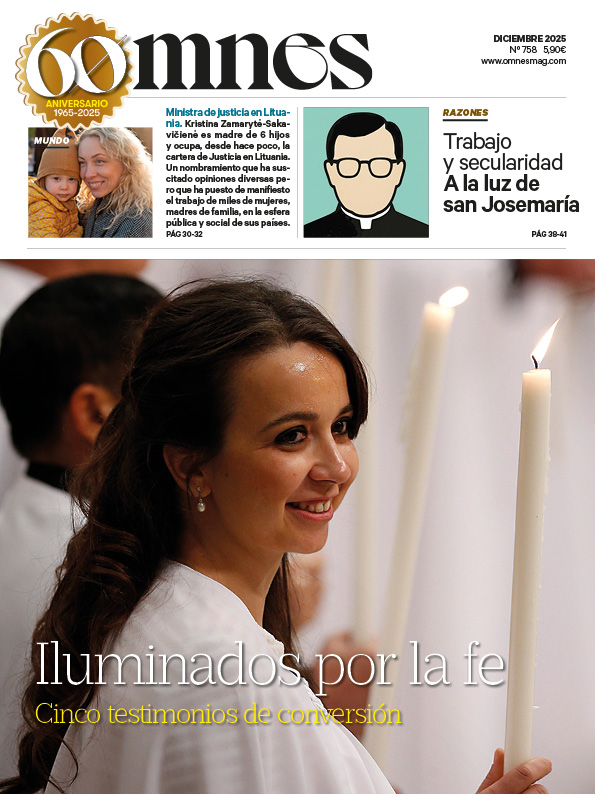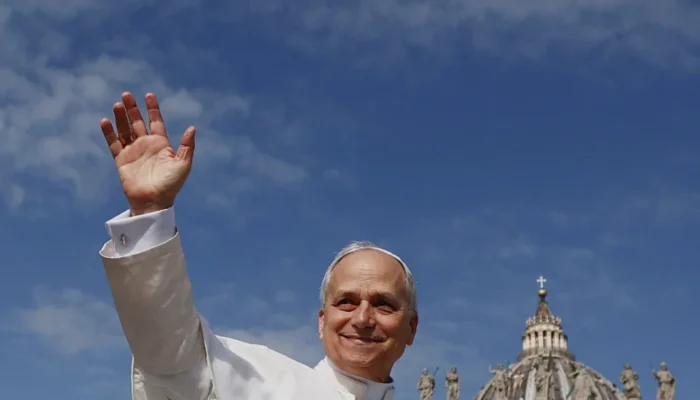The papal motto "In illo Uno, unum" ("In that One, one only") chosen by Leo XIV represents one of the most profound intuitions of the Christian tradition: the mysterious unity of the many believers in the one Christ. This expression, apparently simple, contains an extraordinary theological richness that finds its deepest roots in the Holy Scriptures and in patristic interpretation, particularly in the Augustinian exegesis of Psalm 127(128).
From familiar chant to ecclesial vision: Augustinian rereading
Psalm 127(128), traditionally classified among the "Songs of Ascents," presents in its original text a beautiful description of the prosperity that accompanies the God-fearing man: his work is fruitful, his wife fruitful as an abundant vine, his children like olive branches around the table. This idyllic image of family blessing has resonated for centuries in Jewish and Christian spirituality.
However, the theological genius of St. Augustine transcends literal interpretation to discover in this psalm a profound Christological and ecclesial prefiguration. In his Enarrationes in PsalmosThe bishop of Hippo proposes an innovative exegesis that transforms this familiar canticle into a prophetic vision of the Church united to Christ.
Augustine begins by acknowledging the blessing of the Lord-fearing man that "eats the fruit of his labor" and contemplates its "woman as a fruitful vine". and their "children around the table". However, his interpretation takes a decisive turn by identifying this "man" not as an isolated believer, but as "the total Christ:
Head and Body". This primordial identification constitutes the hermeneutical key that will allow us to unfold all the symbolic richness of the psalm.
The paradox of unity: many and one in Christ
From this Christological identification, St. Augustine develops one of his most fruitful intuitions: although "we are many men," in reality "we are one man" in Christ. This paradox of simultaneous plurality and unity-"many Christians and one Christ"-finds its foundation in a grammatical exegesis of the psalm itself, where God uses the singular ("you shall eat the fruits") to emphasize that, despite the plurality of the faithful, all recognize their radical unity in a single divine reality.
Conceptual dimensions of unity in Christ
The Augustinian vision of the unity of believers in Christ unfolds in two complementary perspectives which, although they start from different logical approaches, converge in the same theological truth:
Unification of plurality in the uniqueness of Christ:
- Emphasis: It shows how the "many" believers are integrated to constitute "one being" in Christ.
- Logic: From the multiple to the singular - like branches grafted onto a single trunk - the faithful find their union in Him.
Unified identity derived from Christ:
- Emphasis: Emphasizes that believers only acquire their true identity by belonging to "one Christ" (Head and Body).
- Logic: From the singular to a cohesive plurality - like cells forming an organism - the singularity of Christ gives cohesion to the Body.
The fundamental distinction between the two perspectives lies in the fact that the former, starting from plurality, suggests contention in Christ, while the latter, starting from the uniqueness of Christ, emphasizes mutual belonging and constitution.
The biblical basis of "In illo Uno, unum".
This theological conception is not an arbitrary construction, but rather finds solid foundation in numerous New Testament texts that St. Augustine masterfully integrated into his exegesis:
Unity of many in one being (Christ):
- "For as the body is one, and hath many members, and all the members of the body, being many, are one body: so also is Christ." (1 Cor 12:12).
- "Being many, we are one body in Christ..." (Rom 12:5).
- "There is neither Jew nor Greek; there is neither bond nor free; there is neither male nor female; for you are all one in Christ Jesus." (Gal 3:28).
- "One body, and one Spirit..." (Eph 4:4).
"One Christ" and "many are one in Him":
- "By one Spirit we were all baptized into one body..." (1 Cor 12:13).
- "You, therefore, are the body of Christ..." (1 Cor 12:27).
- The priestly prayer of Jesus: "That they may all be one... in us." (Jn 17:20-21).
- "To reconcile with God both in one body..." (Eph 2:16).
The Church as a spiritual family: nuptial and fraternal symbols
Continuing with his interpretation, Augustine develops the ecclesial symbol of the spouse and fruitful mother: the Church, as the mystical spouse of Christ, continually begets new children in faith. The "children around the table" express the sacramental and spiritual communion of believers. In this way, Psalm 127(128) is transformed into a foretaste of the communio sanctorumThe spiritual family, under the one head who is Christ, where "the many" participate in "one" and form a single blessed body.
This family metaphor is especially significant because it establishes a link between the daily experience of the home-so central to the original psalm-and the supernatural reality of the Church. The family table becomes a Eucharistic symbol, conjugal fruitfulness an image of evangelization, and the domestic blessing a prefiguration of ecclesial grace.
The theology of the papal motto
The motto chosen by Leo XIV, "In illo Uno, unum", is not simply a poetic expression or a devotional formula. It is a precise theological affirmation with deep biblical and patristic roots. This phrase solemnly declares that Christian unity is not mere strategic cooperation or moral affinity, but an ontological union in Christ, through whom and in whom all are one:
- In Christ we are reconciled (Eph 2:14).
- We are grafted into Christ (Rom 11:17).
- In Christ we are one body (1 Cor 12:12-27).
- In Christ, all are one (Gal 3:28).
The choice of a sapiential-familial psalm as a source of inspiration for expressing an ecclesial vision of communion is characteristically Augustinian. However, the specific adoption of this psalm by Leo XIV as the basis for his motto
It is not a theological abstraction, but a blessing to be lived in the flesh, in the concrete family that is the Church.
Augustinian coherence with Scripture
Augustine's theology manages to harmoniously unite both perspectives on unity in Christ:
- Organic unity in Christ the Head (1 Cor 12; Rom 12; Eph 4).
- Personal and supernatural union by grace (Gal 2:20; Jn 17).
- The work of the Holy Spirit in the communio sanctorum (1 Cor 12:13; Eph 2:18).
- Overcoming social and ethnic divisions (Gal 3:28; Col 3:11).
Thus, the integration of many believers in Christ and the identity that derives from Him are two faces of the same reality: the Church as a living Body under the one Head, reconciled and transformed into "the one" who is Christ.
Conclusion: A message for our time
Psalm 127(128), interpreted in the light of the Augustinian vision and included in the papal motto "In illo Uno, unum"offers us a profound ecclesial vision: the many believers, in all their diversity, are mysteriously united in the One who is Christ. It is this biblical and patristic heritage that Leo XIV proposes to us with his pontifical motto: a spirituality of communion rooted in the unity of the Body of Christ.
In our times marked by social fragmentation, individualism and ecclesial divisions, this motto reminds us that true blessing consists in to live and recognize ourselves as members of the one Christ. The exegesis of Psalm 127(128) thus becomes a spiritual invitation to rediscover the mystery of unity that constitutes the very core of Christian identity: being many, we are one in Him who is the One.
Doctor of Canon Law







